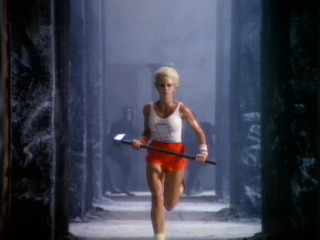On January 24, 1984, one of the most unusual and highly discussed commercials debuted during the Super Bowl: Apple’s “1984” ad. In reality, if it weren’t for a bold act of corporate defiance, this ad might have been entirely buried and forgotten before it was ever aired.
The advertisement, which aimed to introduce Apple’s first home computer, paid homage to George Orwell’s dystopian novel, 1984. It begins with a scene featuring numerous identical-looking individuals dressed in dull gray clothing, all watching a giant screen displaying a totalitarian leader who passionately promotes a vision of a fully unified society where dissenting thoughts are prohibited. The leader on the screen is intended to symbolize IBM, the dominant force in the home computer market at that time. Suddenly, a woman dressed in brightly colored athletic gear, adorned with an image of a Macintosh computer, bursts into the hall, being chased by police officers in riot gear. She hurls a sledgehammer at the screen, shattering it and liberating the minds of the audience.
Despite being directed by the renowned Ridley Scott, the Apple board of directors was not impressed with the commercial. They wanted the ad agency fired, the advertisement buried, and the Super Bowl ad time they had purchased sold in order to recover some of their losses. An ad agency executive, who believed strongly in the commercial, pretended to attempt to sell the ad slot but later informed the board that it was too late to make the sale. As a result, the board had no choice but to use the ad, which ultimately premiered to critical acclaim. Following the ad’s airing, Apple sold over $3 million worth of Macintoshes, leading the company to consider the ad a significant success. However, later that year, the estate of George Orwell claimed that the commercial infringed on copyright and sent Apple a cease-and-desist letter.

